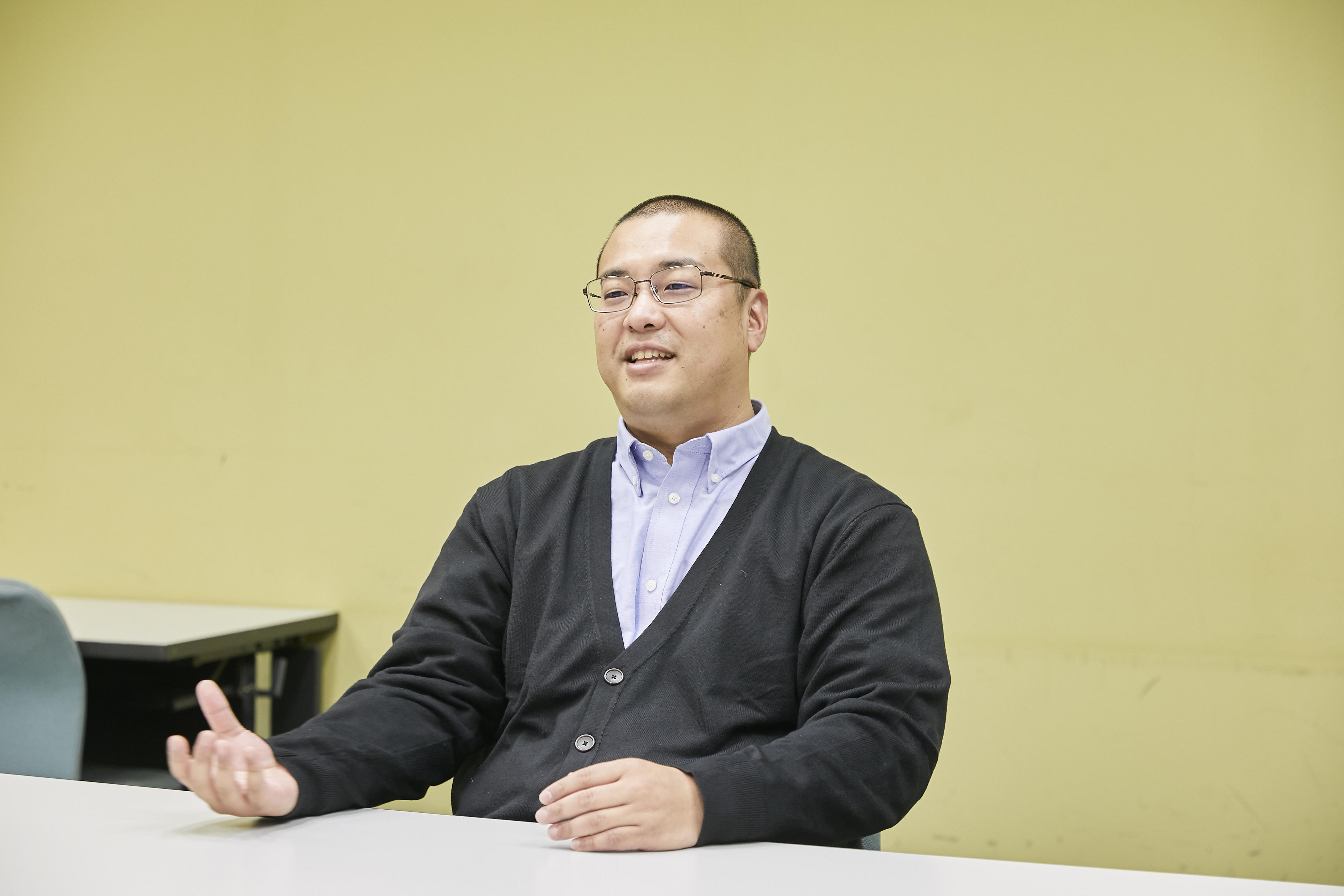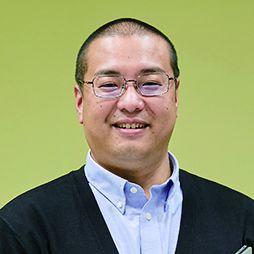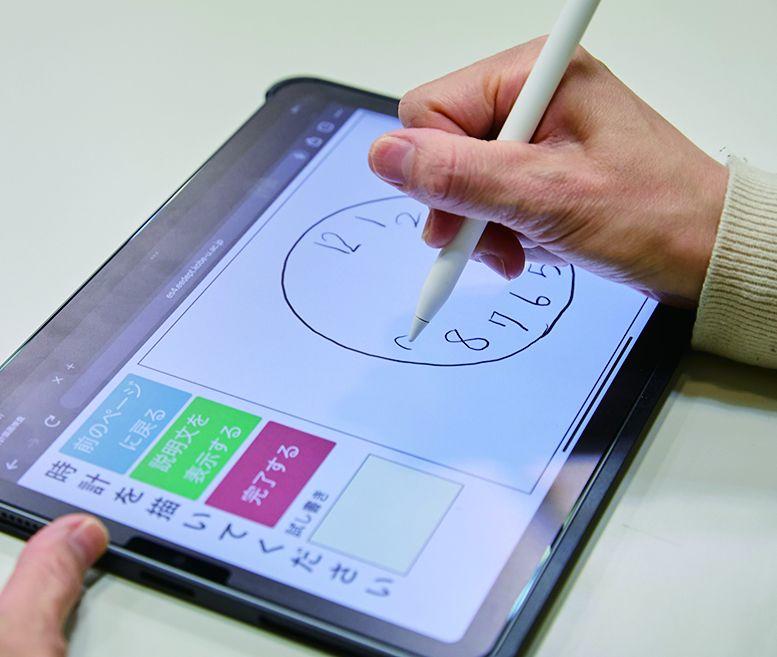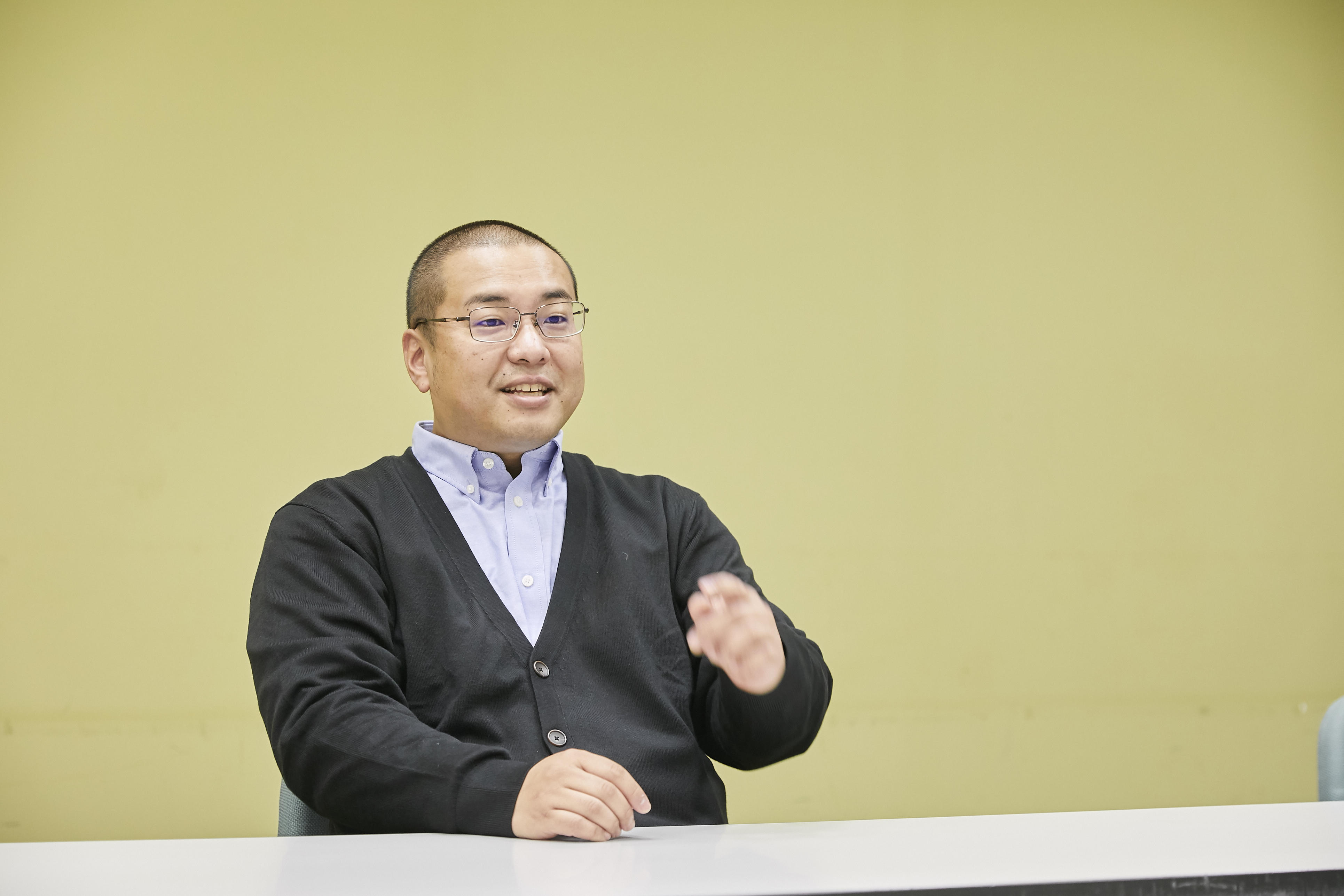- TOP
- Cutting-edge Research and Social Contribution
- Cutting-edge Research
- Helping to solve social problems through development of applications anyone can use

Helping to solve social problems through development of applications anyone can use

What sort of systems meet community needs? The aim is to address burgeoning issues with digital technology. Shrinking population, declining birthrate, societal aging, more frequent large-scale disasters, declining economic power... Rural areas are facing a growing list of issues. As a faculty member in the School of Data & Innovation, which was launched as the fifth school of the university in April 2024, Associate Professor Sachio SAIKI has been searching for ways to address these social problems. He's been exploring solutions that leverage the power of information technology and software, and to that end has proposed applications that are easy for anyone to use. Digital transformation (DX) aims to solve diverse issues with digital technology, and the potential benefits are especially great for rural areas with advanced depopulation and small and medium-sized enterprises. How will the research of Dr. Saiki play out in Kochi Prefecture, which is at the cutting edge of facing tomorrow's problems?
Development of a platform enabling routine cognitive function testing
The vision of the School of Data & Innovation (D&I) is to spark innovation using data as a starting point, and contribute to the solution of global problems in Kochi. There are high expectations on Dr. Saiki as a leading figure in the drive to make this vision a reality.
In light of the increase in dementia patients and worsening shortages of healthcare workers, early detection of dementia is being emphasized because it offers the promise of more effective treatment. The clock drawing test (where a patient draws a round clock at 10:10) and the cube copying test (where a patient draws a copy of a cube) are frequently used for dementia screening, and test scoring and diagnosis are generally done by healthcare workers who look only at the completed drawing. On the other hand, information on the drawing process, such as thinking time before drawing and the drawing sequence, are clearly connected with cognitive function, and there are calls to develop new scoring and diagnostic methods that make use of the drawing process.
In response, the research team of Dr. Saiki first proposed a technique for better visual representation of drawing tests, including elements of the drawing process like drawing sequence, thinking time, pen/pencil pressure, and speed.

"Hand trembling is closely connected with dementia, and healthcare workers can tell something is wrong from hand movements while drawing. Therefore, we developed an environment that can record all sorts of information during drawing, such as the number of times redrawing is done, drawing speed, pen/pencil pressure, and points where drawing was difficult/smooth. This allows the user to examine how the drawing was done, and in what sequence."
Furthermore, a system has been devised to integrate everything from drawing test implementation to examination of test results (including information on the drawing process) and diagnosis. The prototype system was verified in medical settings, care facilities, and ordinary homes, and the results showed that real-world use is possible.
This system is not just a tool integrating steps from testing to diagnosis; it's also a vehicle for collecting digital data on drawing tests--an option that didn't exist before.
Exploiting accumulated big data for more sustainable fire-fighting and emergency response
As the shift to digital progresses, more active steps are being taken to apply diverse data collected by national and local governments using ICT to programs and community development. With the cooperation of the Kobe City Fire Bureau, Dr. Saiki and colleagues are conducting research to realize sustainable fire-fighting and emergency response by using big data accumulated on fire-fighting and ambulance dispatching.
The key to speedy, efficient fire-fighting in an area is determining where and how many fire stations should be established by the fire departments of each local government, and how many vehicles to assign to each station. Under tight financial conditions, it is crucial to find an efficient configuration within the constraints of limited resources. Thus, to determine how far fire department organization meets the needs of each town and area in a city, Dr. Saiki has proposed a tool to support analysis and simulation of fire department configurations. Based on fire department configuration data and town/area data, this system enables automatic calculation of which vehicles will respond, in how many seconds, when a fire occurs in each town or area. It also provides a visual display of results on a map, and automatically calculates optimal positioning of fire departments based on various requirements.
Dr. Saiki has also analyzed ambulance dispatching data for heat illness, one factor behind the strain on emergency medical care. To plan sustainable countermeasures for heat illness with an eye to the future, he developed a model for predicting the number of persons transported for heat illness based on past weather data and ambulance dispatching data. He also developed an application for forecasting the number of persons transported for heat illness in the upcoming week by combining that prediction model with weekly weather forecast data.
To realize more efficient emergency response, he has also proposed a model for forecasting the number of ambulance transports in the medium/long-term, and he's moving forward with research to establish this model.

Working with students as promoter of PBL education to accelerate practical application
A key pillar of education in the School of Data & Innovation is Problem/Project Based Learning (PBL) where students work to solve issues in real-world society. In PBL classes, students collaborate with local governments, companies, and other organizations in Kochi Prefecture--uncovering issues, devising solutions, and learning the digital transformation (DX) process for moving from digitalization to social implementation.
The importance of practical education is widely recognized in Japan. Initial adoption of PBL at universities throughout Japan was driven by the Ministry of Economy, Trade and Industry's advocacy in 2006 of "basic skills for working adults" as essential for working with diverse people. Then in 2008, a project was launched by the Ministry of Education, Culture, Sports, Science and Technology to establish centers for broader dissemination of practical education in order to cultivate IT human resources for supporting growth fields. At that time, Dr. Saiki had just finished his doctoral course at KUT. He was in the right place at the right time and participated in this project as an assistant from KUT. Over the next 13 years, until 2021, he engaged with the PBL method through class improvement and evaluation techniques. From the very beginning, when implementation of PBL began at universities in Japan, Dr. Saiki has been a researcher at the cutting edge of pursuing the best approaches.
In the School of Data & Innovation, he will exploit this previous knowledge to play a wide-ranging role covering not just his own research, but also PBL curriculum design, guidance for students, and efforts to promote understanding of PBL within the university. At this, he flashes an easy smile, saying "I think of myself as a sort of 'jack of all trades'." He says that in 2013 he was "hoping to return to KUT as a faculty member someday" even though he'd transferred from KUT to Kobe University. While mulling over his future direction, he learned that the School of Data & Innovation was recruiting faculty members, and that's how he returned to his old haunts.

Date of posting: June, 2024/ Date of interview: March, 2024
